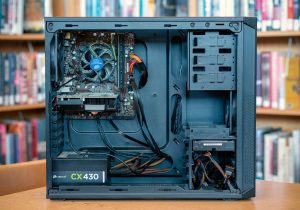
In a rapidly evolving digital landscape, businesses are increasingly faced with the challenge of choosing the right computing model to support their operations. Two of the most dominant choices are edge computing and cloud computing. These technologies are often seen as competitive, but in reality, they serve different purposes and can be complementary when leveraged strategically.
Understanding the fundamental differences between edge computing and cloud computing can help businesses make informed decisions that align with their operational needs, latency requirements, security policies, and overall digital strategy.
What Is Cloud Computing?
Cloud computing is the delivery of computing services such as servers, storage, databases, networking, software, and analytics over the internet, often referred to as “the cloud.” This model allows organizations to scale their IT resources on demand and pay only for what they use.
Main advantages of cloud computing include:
- Scalability: Instantly scale resources up or down.
- Cost-efficiency: Reduce capital expenditures by using a subscription model.
- Accessibility: Access services and data from anywhere with an internet connection.
- Centralized data storage: Simplifies backup and disaster recovery.
Cloud computing is ideal for applications that require substantial computational power, consistent performance, and centralized control over data and resources.
What Is Edge Computing?
Edge computing is a distributed computing model that brings computation and data storage closer to the sources of data. Instead of sending all data to a centralized cloud, edge computing processes data locally, at or near the edge of the network.
Key benefits of edge computing include:
- Low latency: Reduces the time it takes to process data, which is critical for real-time applications.
- Bandwidth savings: Processes data locally, reducing the need to transfer large quantities of data to the cloud.
- Increased privacy: Sensitive data can be processed locally without leaving the device or regional network.
- Improved reliability: Maintains functionality even when connectivity to the cloud is limited or unavailable.
Edge computing is particularly valuable for Industrial IoT systems, autonomous vehicles, and smart cities — scenarios where real-time decision-making is essential.

Edge vs. Cloud: Choosing the Right Environment
Choosing between edge and cloud computing isn’t always about picking one over the other. Instead, it’s about determining the correct balance based on your organization’s unique requirements and industry constraints.
Use Cloud Computing When:
- You need centralized data analytics and machine learning capabilities.
- Your applications are not latency-sensitive.
- You require global scalability and accessibility.
- You need robust data backup and recovery solutions.
Use Edge Computing When:
- Your operations require real-time data processing with minimal latency.
- You have limited or unreliable connectivity.
- You handle sensitive data requiring localized, secure processing.
- You operate in remote environments (e.g., offshore oil rigs, manufacturing floors).

Hybrid Approaches: The Future of IT Infrastructure
Many businesses are now moving towards a hybrid strategy that combines both edge and cloud computing. This approach provides flexibility, allowing critical tasks to be handled locally by edge devices while leveraging the cloud for in-depth analytics, data storage, and long-term trends.
For example: A manufacturing firm could use edge computing to monitor equipment in real time and detect faults instantly, while using the cloud to store historical data for performance analysis and compliance reporting.
Hybrid models enable businesses to take advantage of the strengths of both paradigms, optimizing cost, performance, and reliability.
Security Considerations
Security implications differ significantly between edge and cloud models. Cloud service providers usually offer robust, enterprise-grade security protocols. However, the centralized nature of cloud computing can make it a bigger target for cyber attacks.
On the other hand, edge computing distributes the risk but complicates security management. Each edge node becomes a potential entry point, meaning businesses must enforce strict security measures across multiple geographically dispersed devices.
Organizations must assess their cybersecurity posture and compliance requirements before choosing either model.
Conclusion
Edge computing and cloud computing are not mutually exclusive. Instead, they represent complementary solutions that can be tailored to specific business needs. By understanding the core differences and potential use cases of each, businesses can design IT infrastructures that are more agile, efficient, and resilient.
As digital transformation accelerates, making informed infrastructure decisions will be crucial for maintaining a competitive edge in today’s data-driven economy.






